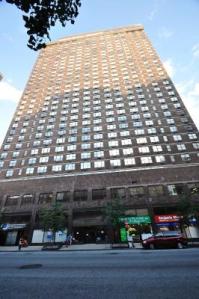Up, Up and Away: Retailers Pushing Boundaries on Upper East Side
By Gus Delaporte April 3, 2013 10:00 am
reprintsNational retailers are pushing north from 72nd Street on the Upper East Side, chasing changing demographics and searching for value, according to several brokers active in the market. Both 86th Street between Third and Lexington Avenues and Madison Avenue north of 72nd Street have seen strong activity and booming lease prices.
“I did deals up there 10 or 15 years ago and was hard-pressed to push $110 to $120 per square foot,” said Patrick Breslin, executive vice president of global retail at Studley. “Today, if you can find good real estate on Lex on 82nd to 85th, you’re looking at $400, $500, $600 per square foot.”
A market formerly known for its discount stores, the Upper East Side is now welcoming a number of national retailers including Williams-Sonoma, H&M, J.Crew and Brooks Brothers.

“Eighty-Sixth Street has matured into a sophisticated retail destination,” added Faith Hope Consolo, chairman of the retail group at Douglas Elliman. “It went from no-name to big-name.”
Apple is a major retailer that has yet to enter the area but soon might, according to Jason Pruger, executive managing director at Newmark Grubb Knight Frank. “It’s only a matter of time before Apple makes a move up there.”
Retailers are looking outside their traditional grid, but despite the increase in asking rents in the market, there are still deals to be had, especially as compared with Midtown and Soho. “There’s still value,” Ms. Consolo said. “The rents have spiked everywhere. The rents are very aggressive across the board.”
“People have looked away from that market, but I don’t think you can look away now,” Mr. Breslin added.
Market saturation south of 72nd Street has forced retailers to look northward. “It’s the demand; I think it will grow,” Ms. Consolo said.
As big-name retailers flock to the expanding market, others will surely follow. “Retailers aren’t pioneers, they’re followers,” Mr. Breslin told The Commercial Observer. “J.Crew on Madison and Brooks Brothers: that really opens the door for more national retailers.”
One drawback for retailers looking at the Upper East Side is the market’s smaller footprints. “If space wasn’t an issue, you would have more national retailers up there,” Mr. Breslin said.
One site on the market which could attract a national retailer is at the northeast corner of 86th Street and Lexington Avenue. “It’s a two-story building, and I fully believe—if it’s not already happened—I believe that site will get leased to somebody on a long-term basis,” Mr. Breslin said.
The property at 86th and Lexington is too good to pass up, Mr. Pruger agreed. “Someone is going to make a lot of money on that.”
There is still room for the market to grow, however, especially eastward, where the completion of the Second Avenue subway line will generate expansion. “As soon as the subway is finished, new retailers will come there. It will get vibrant again,” Mr. Breslin said. “And at a 75 to 100 percent increase on what rents are right now.”
If retailers can withstand the short-term pain of the subway line’s construction, they stand to benefit in the long run. “Private money follows public money,” Mr. Pruger said. “Over time [the Second Avenue subway] is going to open up the eastern part of the Upper East Side and make it more accessible.”
Expansion northward is also a distinct possibility. “Madison will eventually push up from 86th Street to 96th Street,” Mr. Breslin added. “We are on an island; there’s only so much real estate available.”
One example of the push north is Whole Foods’ lease at 87th Street and Third Avenue, Mr. Pruger noted. “We’re already breaking through the barrier and pushing north of 86th Street.”


